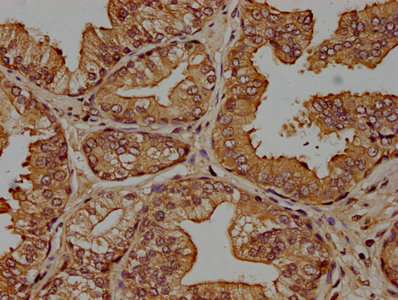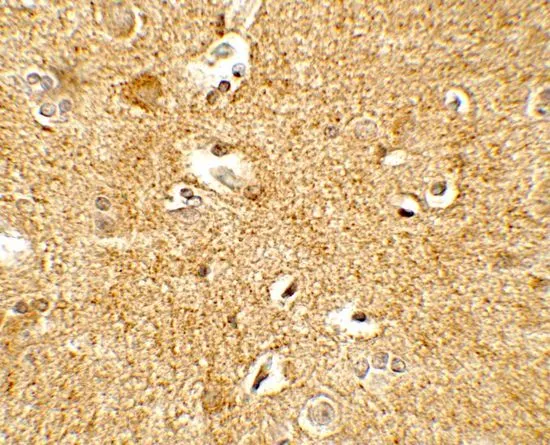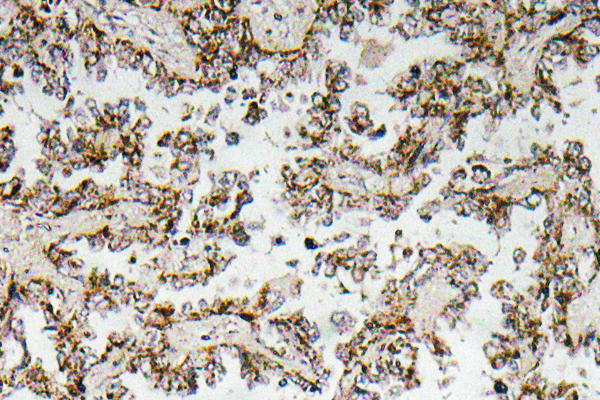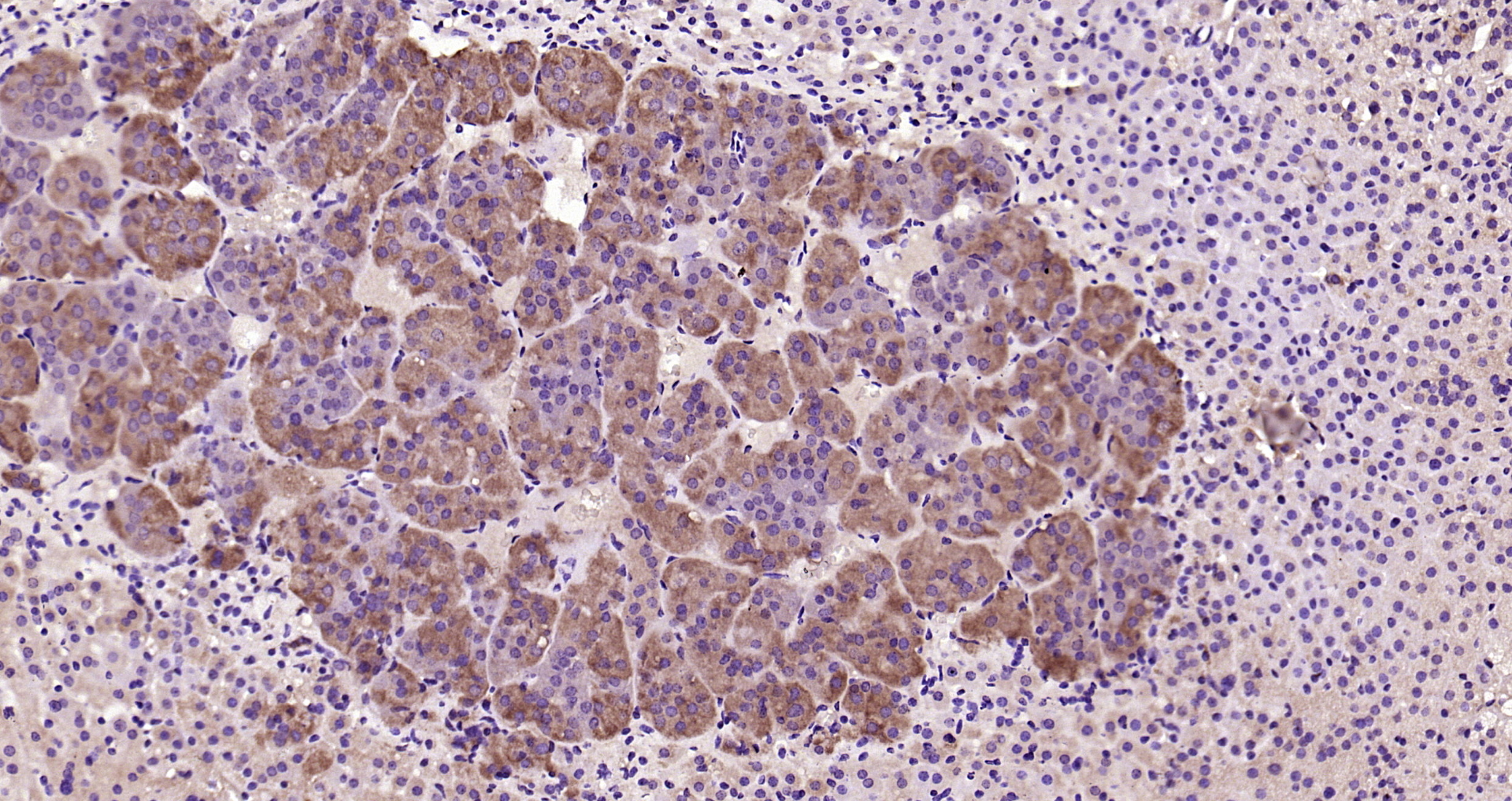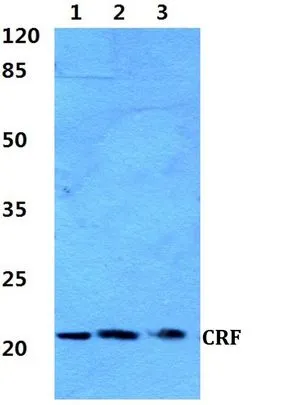
WB analysis of various samples using GTX66703 CRF antibody. Lane1 : MCF-7 cell lysate Lane2 : Mouse spleen tissue lysate Lane3 : Rat spleen tissue lysate Dilution : 1:500
CRF antibody
GTX66703
ApplicationsWestern Blot
Product group Antibodies
TargetCRH
Overview
- SupplierGeneTex
- Product NameCRF antibody
- Delivery Days Customer9
- ApplicationsWestern Blot
- CertificationResearch Use Only
- ClonalityPolyclonal
- Concentration1 mg/ml
- ConjugateUnconjugated
- Gene ID1392
- Target nameCRH
- Target descriptioncorticotropin releasing hormone
- Target synonymsCRF, CRH1, corticoliberin, corticotropin-releasing factor
- HostRabbit
- IsotypeIgG
- Protein IDP06850
- Protein NameCorticoliberin
- Scientific DescriptionThis gene encodes a member of the corticotropin-releasing factor family. The encoded preproprotein is proteolytically processed to generate the mature neuropeptide hormone. In response to stress, this hormone is secreted by the paraventricular nucleus (PVN) of the hypothalamus, binds to corticotropin releasing hormone receptors and stimulates the release of adrenocorticotropic hormone from the pituitary gland. Marked reduction in this protein has been observed in association with Alzheimers disease. Autosomal recessive hypothalamic corticotropin deficiency has multiple and potentially fatal metabolic consequences including hypoglycemia and hepatitis. In addition to production in the hypothalamus, this protein is also synthesized in peripheral tissues, such as T lymphocytes, and is highly expressed in the placenta. In the placenta it is a marker that determines the length of gestation and the timing of parturition and delivery. A rapid increase in circulating levels of the hormone occurs at the onset of parturition, suggesting that, in addition to its metabolic functions, this protein may act as a trigger for parturition. [provided by RefSeq, Nov 2015]
- Storage Instruction-20°C or -80°C,2°C to 8°C
- UNSPSC12352203

